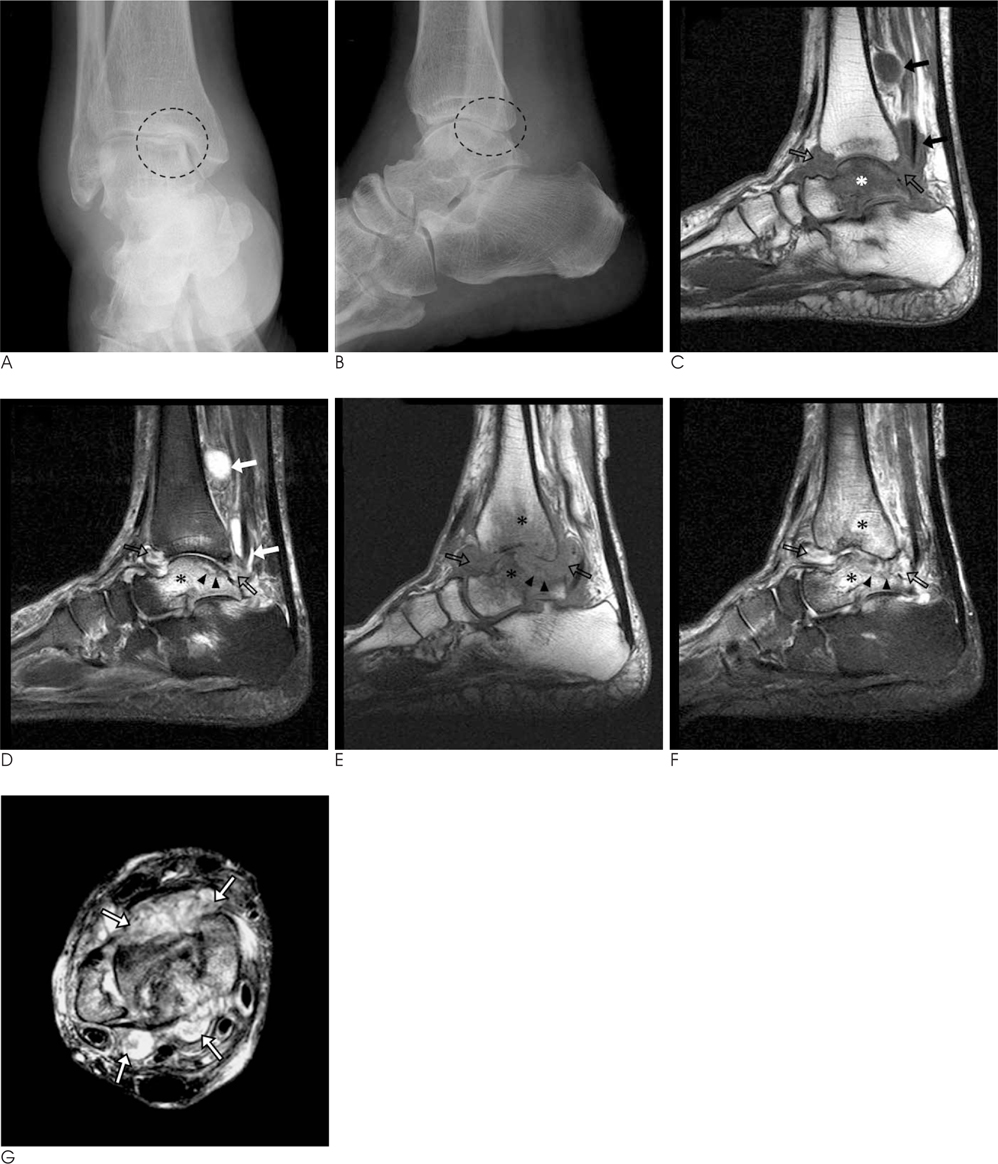J Korean Soc Radiol.
2011 Jun;64(6):587-591. 10.3348/jksr.2011.64.6.587.
Candida Parapsilosis Arthritis Involving the Ankle in a Diabetes Patient: A Case Report1
- Affiliations
-
- 1Department of Radiology, The Catholic University of Korea Uijeongbu St. Mary's Hospital, Korea. ka1000@catholic.ac.kr
- KMID: 1443509
- DOI: http://doi.org/10.3348/jksr.2011.64.6.587
Abstract
- Candida parapsilosis is a rare opportunistic fungal pathogen of the musculoskeletal region. Immune function of almost all patients is severely disturbed. Most reported cases of septic arthritis of joints by Candida involve the knee, especially Candida parapsilosis. To our knowledge, there has been only one case report of Candida parapsilosis involving the ankle presented on only plain radiography. We report a case of Candida parapsilosis arthritis involving the ankle in a diabetes patient which was shown on MR imaging.
MeSH Terms
Figure
Reference
-
1. Masoud M, Nasser NJ, Karban A, Edelstein S. Candida parapsilosis septic arthritis in a renal transplant patient. J Clin Rheumatol. 2008; 14:56.2. Marmor L, Peter JB. Candida arthritis of the knee joint. Clin Orthop Relat Res. 1976; 133–135.3. Turgut B, Vural O, Demir M, Kaldir M. Candida arthritis in a patient with chronic myelogenous leukemia (CML) in blastic transformation, unresponsive to fluconazole, but treated effectively with liposomal amphotericin B. Ann Hematol. 2002; 81:529–531.4. Trofa D, Gacser A, Nosanchuk JD. Candida parapsilosis, an emerging fungal pathogen. Clin Microbiol Rev. 2008; 21:606–625.5. Miller DJ, Mejicano GC. Vertebral osteomyelitis due to Candida species: case report and literature review. Clin Infect Dis. 2001; 33:523–530.6. Cha JG, Hong HS, Koh YW, Kim HK, Park JM. Candida albicans osteomyelitis of the cervical spine. Skeletal Radiol. 2008; 37:347–350.7. Munk PL, Lee MJ, Poon PY, O'Connell JX, Coupland DB, Janzen DL, et al. Candida osteomyelitis and disc space infection of the lumbar spine. Skeletal Radiol. 1997; 26:42–46.8. Hsu CY, Lu HC, Shih TT. Tuberculous infection of the wrist: MRI features. AJR Am J Roentgenol. 2004; 183:623–628.9. Parmar H, Shah J, Patkar D, Singrakhia M, Patankar T, Hutchinson C. Tuberculous arthritis of the appendicular skeleton: MR imaging appearances. Eur J Radiol. 2004; 52:300–309.10. Karchevsky M, Schweitzer ME, Morrison WB, Parellada JA. MRI findings of septic arthritis and associated osteomyelitis in adults. AJR Am J Roentgenol. 2004; 182:119–122.
- Full Text Links
- Actions
-
Cited
- CITED
-
- Close
- Share
- Similar articles
-
- A Case of Candida Parapsilosis Ankle Arthritis after Intra-articular Steroid Injection
- A Case of Candida parapsilosis Arthritis
- A Case of Candida Parapsilosis Infectious Arthritis in a Patient with Enteropathic Arthritis and Ulcerative Colitis
- A Case of Melanonychia Caused by Candida parapsilosis
- A Case of Candida parapsilosis Meningitis in a Patient with Ventriculo-peritoneal Shunt



